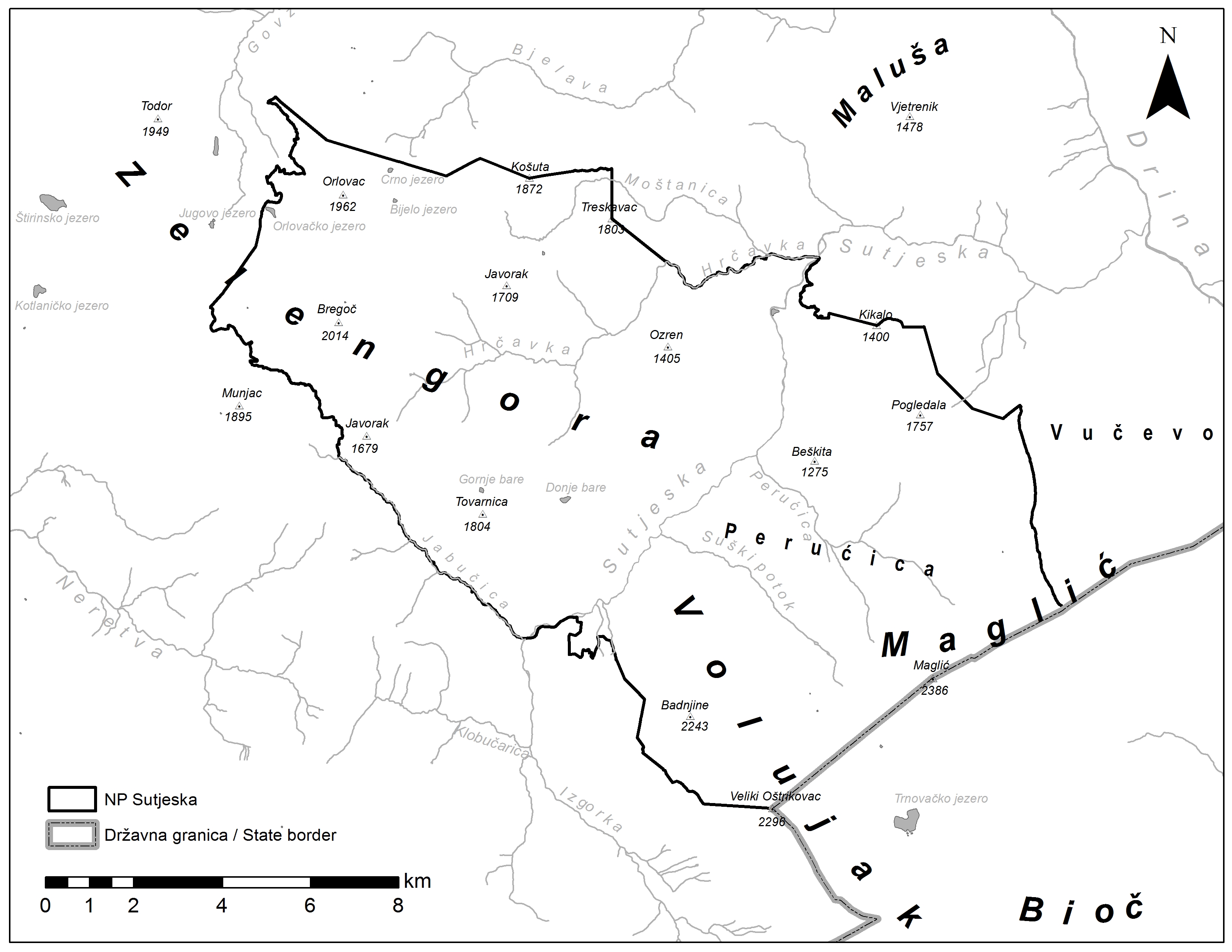History of nature protection in the Sutjeska National Park
DOI:
https://doi.org/10.7251/GSF1726113SKeywords:
Bosnia and Herzegovina, Durmitor, Maglić, Perućica, physical plan, Piva, Republic of Srpska, transboundary protected area, ZelengoraAbstract
Sutjeska National Park is the oldest national park in Bosnia and Herzegovina (B&H). Established in 1962, at the border with Montenegro in SE B&H (Figures 1–2), it harbors some of the country’s most valuable natural assets. With the great diversity of relief, geological, hydrological and climatic features it represents a biodiversity hotspot of B&H. It is no wander that the initiatives for the extension of the National park’s borders started to appear from the very date of its designation. History of the nature protection in the area of Sutjeska National Park dates back to 1893 when Protected area for game was designated over the area of Zelengora, Volujak and Maglić Mts for the protection of rare and endangered game species (Laska, 1905) (Figure 3). However, the first legal act to cover other aspects of natural values of the area came only in 1952, when the area of primeval forest Perućica was excluded from forest utilization. In 1954, the area of 1434 ha of Perućica was designated as strict nature reserve (Figure 4). The National park itself was designated in 1962 (Zakon o proglašenju područja Sutjeske nacionalnim parkom, 1962). After the war the Sutjeska National Park was recognized in Republic of Srpska in its original borders (Zakon o nacionalnim parkovima, 1996, 2010; Zakon o Nacionalnom parku “Sutjeska,” 2012). The first initiative for the extension of the Park’s boundaries came with the Program of spatial organization of Sutjeska National Park (Urbanistički zavod BiH, 1968). It planned the extension over 62 000 ha with part of it in Montenegro (Figure 6) but it did not include the habitat of Picea omorika which was lying several hudred meters to the north of the proposed boundary. Physical plan of the special area Sutjeska National Park (Urbanistički zavod BiH, 1986) gave somewhat smaller but similar proposal (Figure 7). The first initiative came out from the National Park itself in 2003, with the proposed extension over the Tara Canyon (Figure 8). The proposal from the Physical plan of the Republic of Srpska until 2015 (Urbanistički zavod Republike Srpske, 2008) is similar to that of 1968 with the proposed extension in Montenegro which made this proposal the transboundary and international (Figure 9). The proposal from the Physical plan of the Republic of Srpska until 2025 (JU Novi urbanistički zavod Republike Srpske, 2015) is much more unpretentious with much smaller area covered (Figure 10). But still, the most modest proposal to date came from the new Management plan (Institut za građevinarstvo IG, 2012) (Figure 11). This unrealistically small extension proposal was justified by low capacities of National Park to manage larger area. Initiative for the Transboundary protected area Durmitor-Tara canyon-Sutjeska came from UNEP (Niewiadomski et al., 2010). This initiative was based on the Tara canyon as the link between the two National Parks – Sutjeska and Durmitor (Figure 12). However, after proclamation of the Piva Nature Park in Montenegro these two National parks became practically connected (Figure 13). The area of Sutjeska National Park is also overlapping with the official B&H proposal for the EMERALD network site, and with the proposed potential NATURA 2000 site (Figure 14). It is also worth mentioning that, as of 23 May 2017, the primeval forest Perućica is on Tentative list of B&H for the potential inscription on the UNESCO World Heritage List (UNESCO World Heritage Centre, n.d.). At the end, after analysis of all proposed extensions we gave our own, aiming to gather all good from the past initiatives, but also to encompass all the features that were left out by previous proposals (Figure 15). We think that this way the protection of natural heritage of the wider area of the Sutjeska National Park would gain the most.

Downloads
Published
Issue
Section
License
Copyright (c) 2017 Vladimir Stupar, Đorđije Milanović

This work is licensed under a Creative Commons Attribution 4.0 International License.

